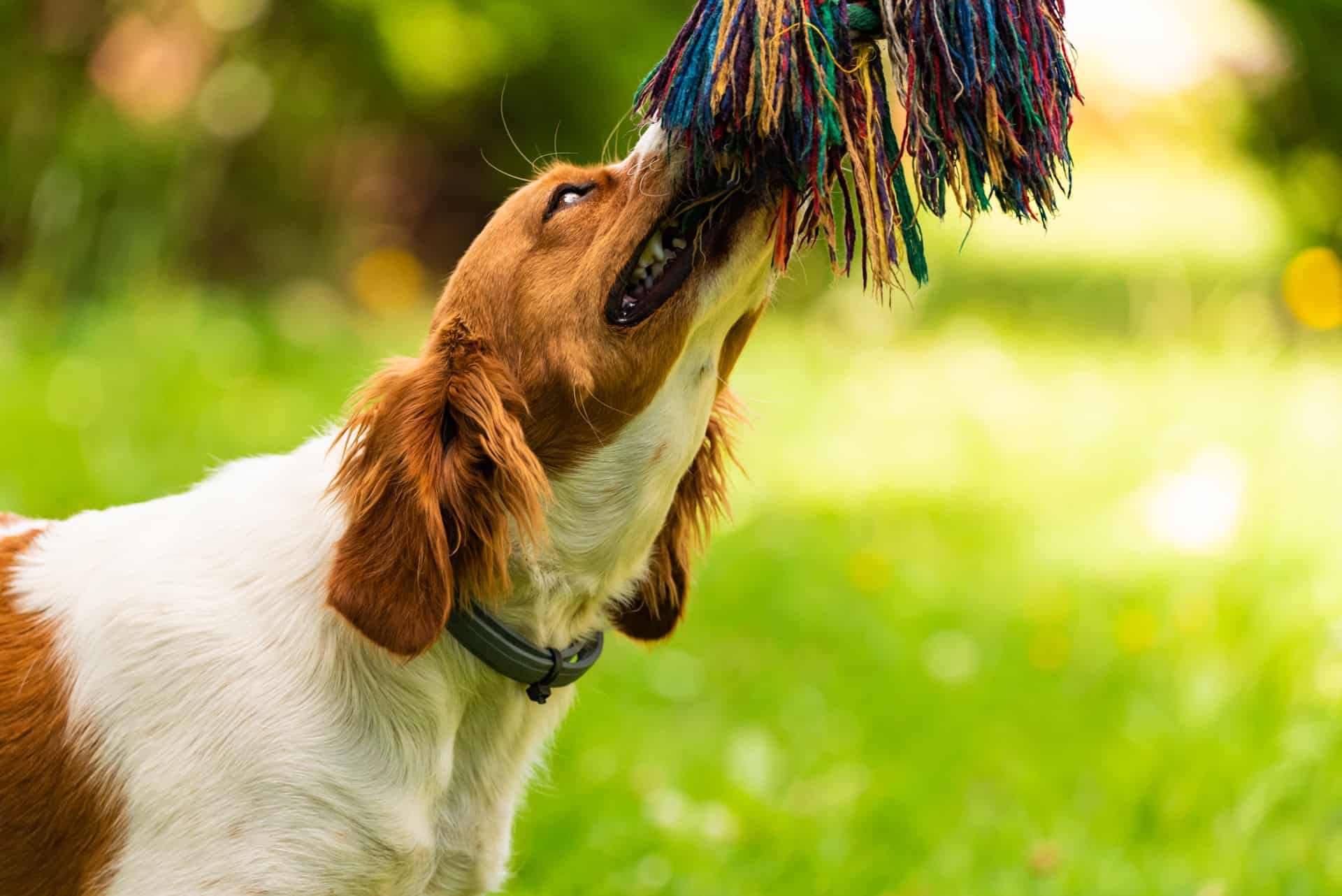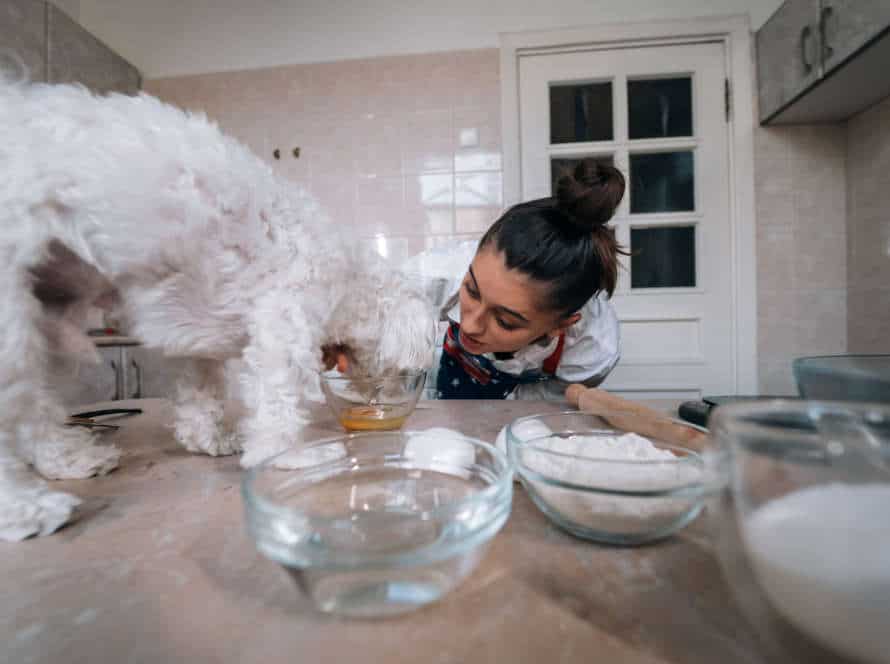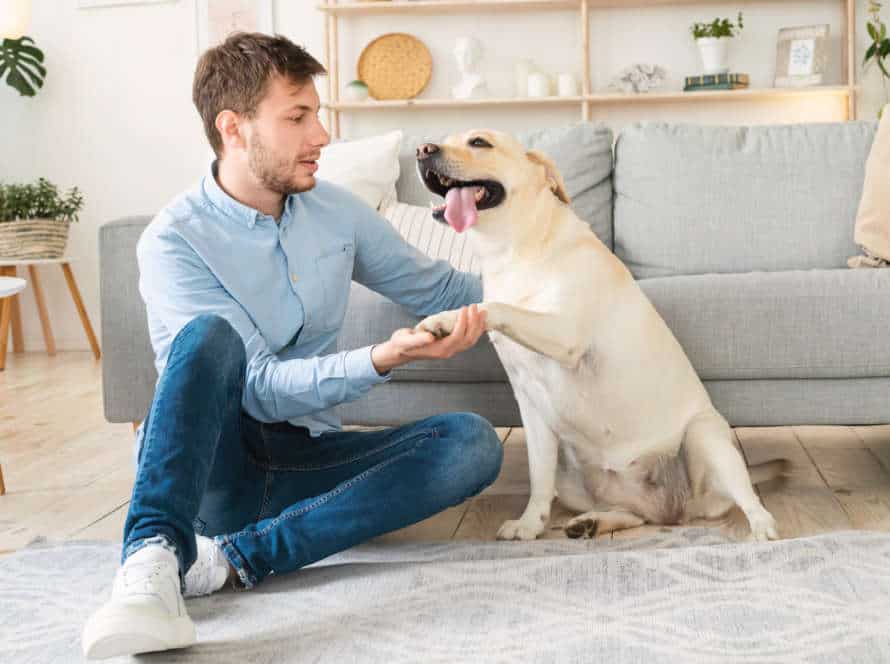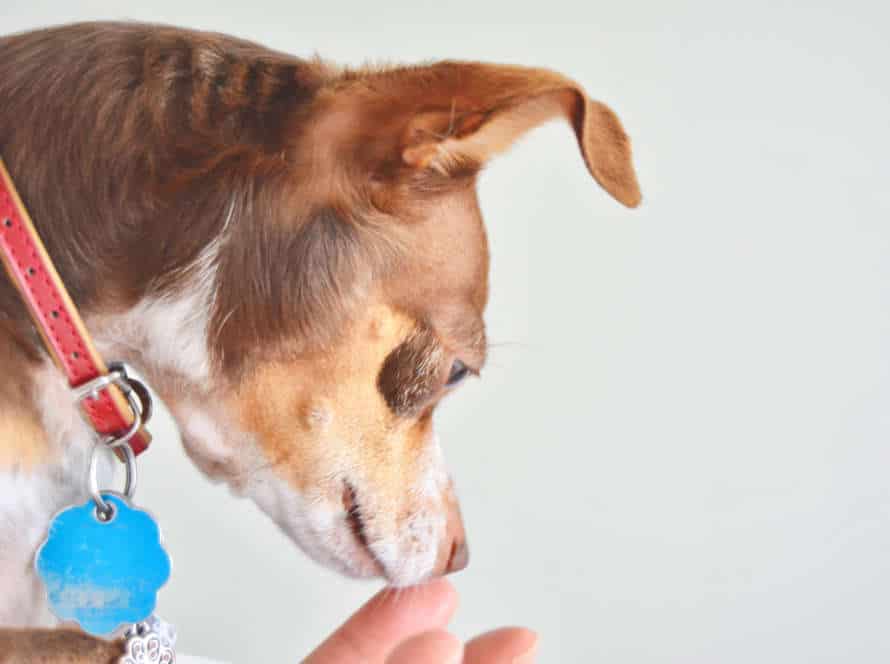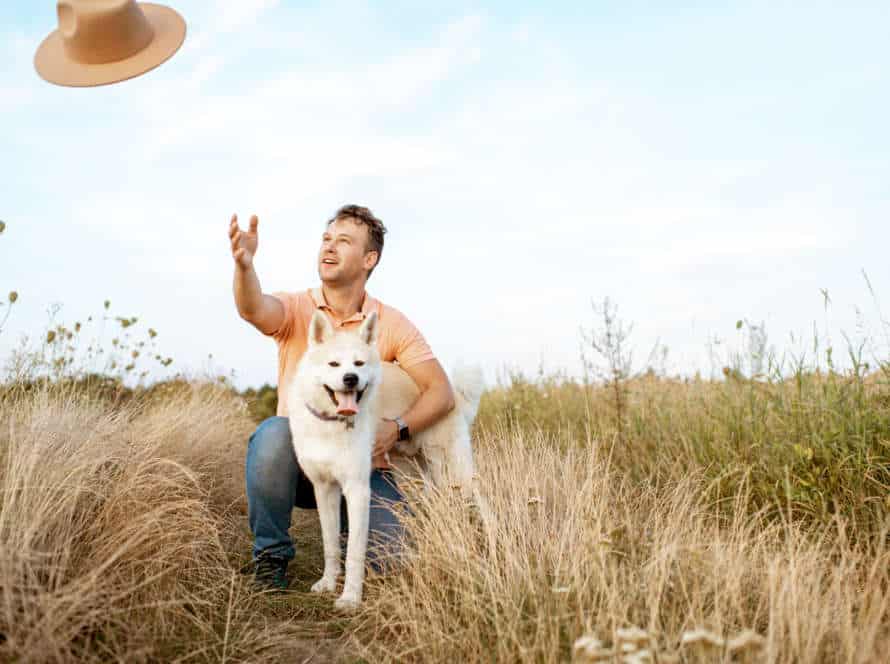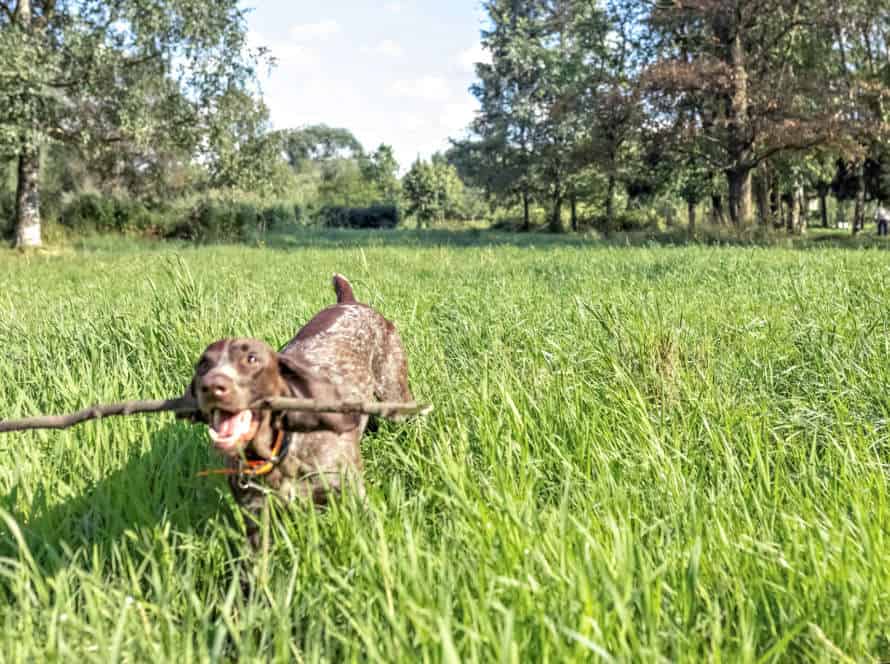Teaching Your Puppy How to Play Tug of War
Introducing tug-of-war to your pup can be a great bonding experience. It also helps them learn appropriate behaviors. Plus, it’s a way for them to get rid of extra energy and stay mentally active. Here, we’ll discuss how to play this game with your puppy.
Why tug of war is a great game for puppies
Playing tug of war with your pup has amazing benefits! It’s a fun game and is great exercise. It will also help develop physical strength, boost confidence, and reinforce obeying commands. Plus, it’s a great way to use their natural prey drive.
To teach your pup tug of war:
- Hold the tug toy in front of them and let them grab it.
- Gently pull it towards you and let them tug it away.
- Say a command like “tug” to reinforce rules.
- Teach them to “release” the toy on command to avoid aggressive behavior.
Stay patient, keep the game controlled, and monitor your pup’s behavior for safe playtime!
Common mistakes to avoid when teaching tug of war to puppies
Teaching tug of war to puppies can be fun and useful for their growth. But, many novice puppy owners make blunders when starting the game.
Here are some things to keep in mind:
- Don’t use aggressive tug toys or spur aggressive conduct.
- Don’t let your puppy start the game or tug away from you.
- Don’t let your pup win each time or they will have bad habits.
- Don’t carry on the game if your puppy bites or mouths your skin.
- Rather, use soft, pup-friendly tug toys and always start the game yourself. Allow your puppy to win sometimes, but not each time. End the game if your pup gets too excited or begins biting. Support positive behavior and use tug of war as a bonding experience between you and your puppy.
How tug of war can help with your puppy’s training and overall behavior
Tug of war is a great way to train your pup and keep them well-behaved! But remember to teach them how to play properly. Here’s some help:
- Get a special toy just for tug of war training.
- Say “take it” or “tug” to let them take the toy.
- When they should drop it, say “give” or “drop it”.
- Let your pup win every time.
- No aggressive play or letting them bite you/your clothes.
Playing tug of war will help teach obedience and deepen your bond. Pro Tip: Always supervise and don’t let them play with inappropriate items.
Tips for Playing Tug of War with Puppies
Tug of war with puppies is awesome! Teaching them the right way to play from a young age is key. Keep in mind, puppies don’t get “winning” or “losing”, so focus on showing them how to play carefully and properly.
Here are some tips for a successful tug of war session with puppies:
Choosing the Right Tug Toy for Your Puppy
When selecting a tug toy for your pup, it’s important to think about breed, size and play style. To make sure you get a safe and fun toy, here are some tips:
- Choose one that matches the breed and age of your puppy.
- Ensure it is made with tough materials that can handle play and chewing.
- Pick one with a handle or knot at each end for easy gripping.
- Avoid toys made of hard plastic or tiny pieces that your pup could swallow.
- Always play with your puppy using the tug toy and be sure to supervise. Be gentle but firm so your pup learns good tug of war manners.
Proper Technique for Playing Tug of War with Puppies
Playing tug of war with puppies is a great way to bond. Plus they get exercise, stimulation, and training. But, use the right technique to stay safe. Here are tips:
- Use a soft toy – no sharp edges or parts.
- Teach a “drop it” or “leave it” command.
- Don’t pull too hard or jerk the toy.
- Let your pup start the game and set the pace.
- Pause if they get overexcited or aggressive.
- End the game before they lose interest.
Tug of war can be fun and safe when played right. Pro tip: Reward good behavior with treats and praise!
Using Commands and Rewards to Reinforce Good Behavior during Tug of War
To teach puppies the right way to play tug of war, using commands & rewards is effective. Here’s how:
- Before playing, teach “drop it” & “leave it” commands.
- Begin with the “take it” command & let pup grab toy.
- Use “drop it” command for pup to release it when game is over.
- Good behavior gets treats, praise & extra playtime.
- Don’t tug too hard or aggressively, as it can lead to injury or aggression.
With commands & rewards, you can teach proper play habits & create a bond with your puppy. Tip: Always supervise & end game if pup is too excited or aggressive.
When to Avoid Playing Tug of War with Puppies
Tug of War: it’s an exciting and fun game for puppies! But beware: there are certain times when it’s best to not play it. Watching your puppy play can be fun, yet you must be sure it is safe for their age and level of understanding. In this article, we’ll discuss when it is best to not play Tug of War with puppies.
Teaching Puppies When to Stop Playing and How to Drop the Toy
Teaching puppies when to stop playing and how to drop the toy is essential. Playing tug of war with your pup is a fun bonding activity. But, you must teach them how to do it right from a young age. Here are some top tips:
- Set a cue word like ‘drop‘ or ‘leave it‘ each time you want your pup to release the toy.
- Use positive reinforcement – like treats or praise – to encourage them to obey your command.
- If your pup bites or jumps at you, stop playing immediately. That sends the message that rough play isn’t allowed.
- Don’t play if your pup is aggressive, anxious, or disobedient.
Pro tip: Be consistent in training and patient with your puppy. Over time, they’ll understand the proper way to play tug of war and drop the toy when asked.
Avoiding Overstimulation when Playing Tug of War with Puppies
Tug of war with puppies can be fun, but it’s important to avoid overstimulating them. Here’s when to avoid playing and some tips to teach proper play.
- Don’t play if your pup is overly excited or tired.
- Teach them “drop it” and “leave it” commands.
- Only use a specific tug toy – never your hands or other items.
- Short, controlled tugs – not continuous pulling.
- Take breaks and end the game on a positive note.
By following these tips, tug of war can be a positive bonding experience and teach good play habits.
Potential Risks of Playing Tug of War with Puppies and How to Minimize Them
Playing tug of war with puppies can be risky. Here are the risks and how to avoid them:
- Injuries: Pulling too hard or abruptly can hurt a pup. Use a soft, light toy and pull gently.
- Aggression: Tug of war could trigger aggressive behavior in puppies. Teach them the “leave it” command and encourage them to give up the toy after a few minutes.
- Overstimulation: Too much playtime can overstimulate puppies. Limit it to 5-10 minutes and take breaks.
By following these tips, you can have a safe and fun game of tug of war!
Frequently Asked Questions
Q1: What is tug of war for puppies and why is it important to teach proper play from a young age?
A1: Tug of war is a game that involves pulling on a toy or rope, and it is important to teach puppies how to play properly so they can develop good habits and avoid behavior problems later in life.
Q2: How do I introduce tug of war to my puppy?
A2: Start with a soft, durable toy and use positive reinforcement to encourage your puppy to grab the toy and play. Make sure to set boundaries and teach your puppy how to release the toy on command.
Q3: Is tug of war safe for puppies?
A3: Yes, if played properly, tug of war can be a safe and fun activity for puppies. However, it is important to supervise play and avoid toys that are too small or easily destructible.
Q4: Can playing tug of war make my puppy aggressive?
A4: No, playing tug of war does not make puppies aggressive. However, it is important to teach your puppy good manners and establish rules around playtime to prevent rough behavior.
Q5: How long should I play tug of war with my puppy?
A5: It is important to keep play sessions short and end on a positive note to avoid overstimulation or aggression. Two to three minutes of play is a good guideline.
Q6: What are some other benefits of playing tug of war with my puppy?
A6: Playing tug of war can help build your puppy’s confidence, improve their physical fitness, and strengthen your bond as you engage in a fun activity together.

